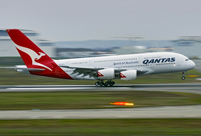 Ballerinas anywhere but onstage
Ballerinas anywhere but onstage
 Top 10 safest airlines in the world
Top 10 safest airlines in the world
 Top 10 most popular instant messaging apps in the world
Top 10 most popular instant messaging apps in the world
 Inspiring shadow images of Chinese army
Inspiring shadow images of Chinese army
 Models shine Xinjiang auto show
Models shine Xinjiang auto show
 From laid-off worker to int'l referee in bodybuilding
From laid-off worker to int'l referee in bodybuilding
 Selected photos of 'two sessions'
Selected photos of 'two sessions'
 Most unusual taxis around the world
Most unusual taxis around the world
 Bridge Worship Festival in Taijiang, SW China
Bridge Worship Festival in Taijiang, SW China
 |
| Tang Jie, vice Mayor of Shenzhen answers questions during the China Development Forum 2014 • Green Event held on Friday in Beijing. This event was co-organized by the Development Research Center of the State Council and Energy Foundation China. [Jiao Meng / Chinagate.cn] |
The current target for Shenzhen is to decrease the annual average Air Quality Index from 38 to 35 in the next three years, Tang Jie, vice mayor of Shenzhen in south China’s Guangdong Province said at the China Development Forum held last Friday in Beijing.
Shenzhen ranked first in air quality among China’s major cities in the first three quarters and second in the fourth quarter of 2013. However, Shenzhen experienced severe dust haze in the 2000s; and the peak was 187 days in 2004. Since then, Shenzhen began to curb air pollution, Tang Jie said.
Shenzhen’s per capita incomes are currently up to three times the national average while the carbon emissions intensity per unit of GDP is almost the lowest of China’s big cities. Consumption of gasoline and diesel has continued to decrease in the past two years. “We are trying to set the turning point of carbon emissions to the year 2017 or 18,” he said with confidence.
He listed measures taken by the city to realize low carbon development. There are about 6,300 new energy vehicles – taxis and buses – on the road, the most in any single city in the world; the electricity price in Shenzhen is almost the highest in China, which has forced high energy consumption firms to move or get pushed out in the process of industrial upgrades. Shenzhen also attaches importance to energy-saving measures, for example, new buildings must use energy saving design before their registration can be approved.
But professor Song Guojun at Renmin University of China said in an exlusive interview with chinagate.cn that Shenzhen’s case was not a model which could be easily copied in China. “As a seaside city, Shenzhen has more active atmospheric circulation than the most polluted inland cities such as Beijing and cities in Hebei Province; also it has Dayawan nuclear power plant, the biggest such plant in China, to supply energy with less carbon emissions. Therefore other cities need much more input and efforts to curb air pollution,” he explained.
 Female journalists at 'two sessions'
Female journalists at 'two sessions' Interpreters serving 'two sessions'
Interpreters serving 'two sessions' Female SWAT team in Chongqing
Female SWAT team in Chongqing Top 10 safest airlines in the world
Top 10 safest airlines in the world Old photos of Anti-Japanese War
Old photos of Anti-Japanese War Mysterious 'Dolan Tribe' in Xinjiang
Mysterious 'Dolan Tribe' in Xinjiang A bite of Luoping County
A bite of Luoping County This is Shanghai
This is Shanghai Chinese airborne troops complete parachute training in various training bases
Chinese airborne troops complete parachute training in various training bases Ballerinas anywhere but onstage
Ballerinas anywhere but onstage Most unusual taxis around the world
Most unusual taxis around the world Micro-expression at 'two sessions'
Micro-expression at 'two sessions' Bridge Worship Festival in Taijiang, SW China
Bridge Worship Festival in Taijiang, SW China Hollywood documentary brings Diaoyu Islands truth to new audience
Hollywood documentary brings Diaoyu Islands truth to new audience Miss HK and actresses shine at flower show
Miss HK and actresses shine at flower showDay|Week|Month